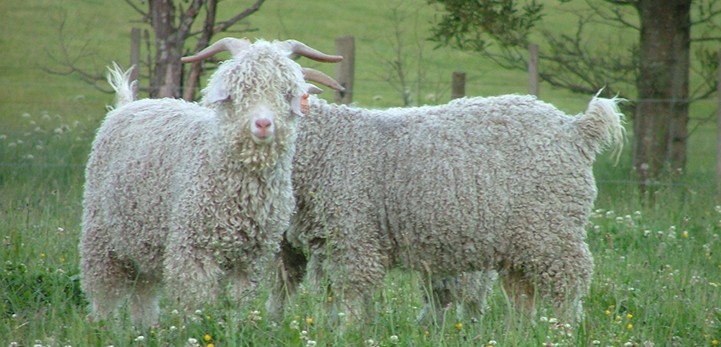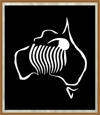Goats are shorn twice per year. They can be shorn in the same way as a sheep, with the same method and pattern used, although a mohair specific comb should be used on the handpiece. They can also be shorn standing if it is the shearers preference.
Shearing is one of the most important times of the year for Angora goat farmers. Farmers must be extra considerate of the animal’s needs because it is a stressful time for the goats. The timing is important also because in order to get the most value from the fleece, the length is key. Too short and you are short-changing yourself, but too long and the buyers have trouble processing the fibre. Between 12 and 18cm is ideal for premium returns.
The environment of the animal during the fleeces growing period, along with all preparation leading up to shearing, is reflected in the final product. The cost of giving goats supplementary feeds is recuperated in the cheque from the fleeces, because better grown, more robust animals will clip a heavier fleece.
Mohair Value: Breeding and Feeding
The three main characteristics which influence the grade of fibre are:
- Fineness (micron)
- Length
- Freedom from kemp
Fineness will always be greater in young stock. As goats age, the diameter of the follicle increases which is reflected in an increase in micron and a decrease in fineness. Breeding for goats that maintain their fineness for longer is an option but it is difficult to keep track of which goats have this quality.
Staple length can also be bred for. Some really high producing, top goats have been imported from Australia over the last ten years which has greatly improved the overall quality of the New Zealand herd. Longer staple length means heavier fleeces, and as we are paid by the kilo, this is pretty important for mohair producers/angora goat farmers.
Freedom from kemp is very important to the processors who buy our raw mohair. Kemp is a hollow fibre which is a throwback to the ancestral goats guard hairs. It doesn’t take up the dye, and it looks chalky and coarse. 99% of angora goats in New Zealand are free from kemp, although cross-bred goats are more likely to have kemp. Kemp fibres in the fleece are usually found down the backline or around the hips of the goats and the presence of kemp in the fleece results in a huge reduction in the price that can be demanded from buyers.
Breeding and a good genetic base is very important in mohair production but the feeding is absolutely vital. Goats will grow much better, heavier fleeces when they have free access to grass and even supplementary feeds like silage, lucerne hay or hard feeds.
As a final footnote, you should also consider the impact of impurities or contamination. The conditions leading up to and during shearing will affect the final price that you receive for the mohair. Goats that are much dirtier on the whole will need more skirting of the fleece into light or heavy stains which means a huge reduction in the end price you will get for the product.
Physical Characteristics
The fineness of the mohair fibre can be measured in microns, which are a millionth of a metre. The fineness of the fibre is largely determined by the age of the animal, with fibres the finest in kids and become larger with goat age.
It is therefore advisable to draft the heard into distinctive age groups (e.g. kids, 2-4 tooths, and mature aged goats), prior to shearing, with the various age groups shorn separately, and fleeces packed where like is with like. Adult fleeces in one bale, kids in another.
Contamination
As shearing approaches, every effort should be made to protect the long mohair fleeces from contamination, as any contamination will depreciate the value of the mohair. Contamination of fleeces can be due to vegetable matter, dust, or pigmented fibres from nearby coloured animals. To avoid contamination, it is advisable to keep the goats in open, well grassed paddocks, to avoid vegetable matter and dust from entering the fleece. Avoid mixing mohair goats with coloured animals, as the pigmented fibre from those animals can contaminate mohair fleeces through contact.
Care must also be taken when feeding out hay to animals as Angora goats often toss hay in the air while eating. This can contaminate their fleece, along with any other fleeces of nearby goats. To reduce this form of contamination, it is recommended that hay is distributed in small patches around the paddock. This method reduces the number of animals which feed near to each other, keeping hay contamination out of fleeces.
Contamination of the fleece can also come from shed stain. Shed stain happens when daggy or muddy goats rub against one another whilst penned up, transferring the stain from the animal to other fleeces. This form of contamination can be reduced by either crutching the goats prior to shearing, or separating dirty goats and containing them in another pen.



